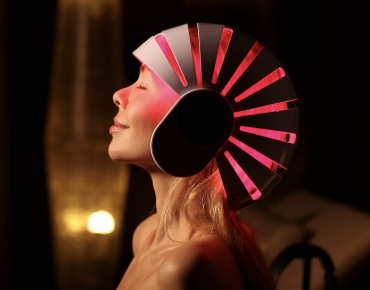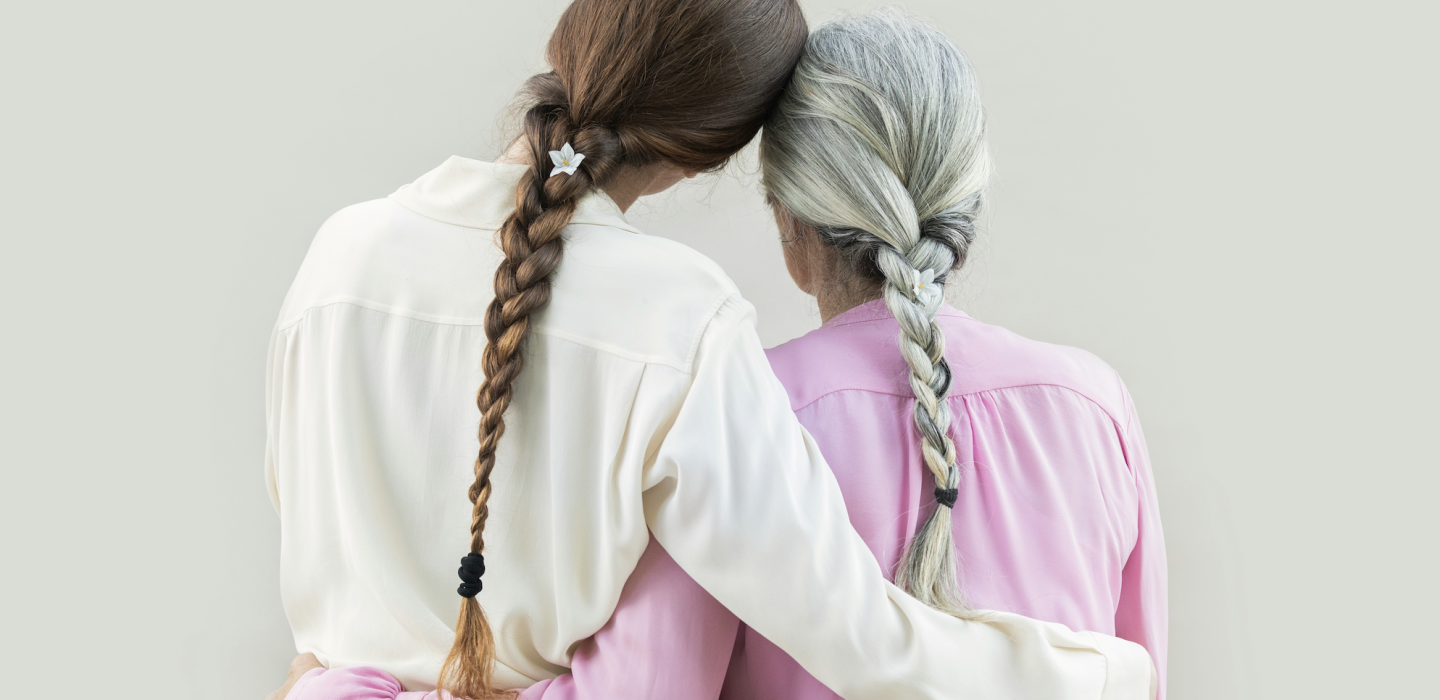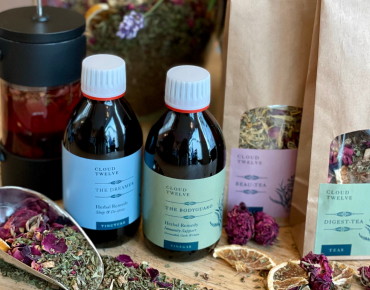The Longevity Lounge
New!
 Discover more
Discover more

with Jenya Di Pierro
What are the main causes of thinning hair or hair loss during our 40's and 50's?
> Slower Metabolism: As we move through our 40s and 50s, our metabolism naturally slows. We tend to lose lean muscle, stomach acid and digestive enzymes decline, and gut transit time slows down. Common medications such as metformin or proton pump inhibitors (PPIs) can also reduce nutrient absorption. All of this makes it easier to fall short on key nutrients that support healthy hair growth.
The most important ones to watch are protein (especially the amino acids cysteine, methionine, and lysine), iron (ferritin), zinc, selenium, copper, iodine, vitamin D, and B vitamins—including biotin (B7), B12, folate (B9), riboflavin (B2), niacin (B3), and pyridoxine (B6)—along with vitamin C, vitamin E, and essential fatty acids.
Deficiencies in any of these nutrients can lead to hair shedding, slower growth, dullness, or breakage. Supporting your diet with these nutrients—alongside strength training to preserve muscle and maintain a healthy metabolic rate—can make a big difference for hair quality in midlife.
During perimenopause, many women also experience shorter menstrual cycles and heavier bleeding, which can cause significant iron loss. In some cases, women may lose up to 500 ml of blood during one period, leading to lower ferritin levels that impact hair thickness and strength.
> Oestrogen decline: Hair follicles aren’t just passive—they respond to estrogen and even make small amounts of it themselves.
In women, the scalp’s oil-hair unit contains an enzyme (aromatase) that converts androgens into estrogens, creating a local “protective shield” that helps keep hairs in their growth phase. When whole-body estrogen drops in the menopause transition—or is blocked by certain breast-cancer treatments—that shield thins. Follicles then feel more of the pull from androgens, and in those who are genetically prone, hairs gradually miniaturise: the part widens, volume shrinks, and female-pattern thinning becomes more obvious.
It’s essentially the opposite of what happens during pregnancy, when high estrogen levels prolong the growth phase and hair often feels thicker and fuller.
> Thyroid disorders (hypo or hyperthyroidism) : Midlife can be a perfect storm for hair changes because several hormonal shifts often overlap. As estrogen levels decline during perimenopause and menopause, hair follicles lose some of estrogen’s pro-growth support and become more sensitive to androgens. This can reveal or worsen female-pattern hair thinning—the gradual widening of the part and reduction in overall volume.
At the same time, thyroid function often fluctuates in these years. Immune shifts, small resets in the brain–thyroid “thermostat,” and even oral estrogen therapy (which can alter thyroid hormone binding) may contribute. Both hypothyroidism and hyperthyroidism can push a large number of hairs into a resting or shedding phase (known as telogen effluvium). This usually shows up as diffuse hair shedding a few months after the thyroid imbalance begins.
Together, these changes can create a midlife one-two punch: estrogen decline thins the ponytail, while thyroid shifts add extra shedding. The good news is that once the thyroid issue is properly treated—and nutrients like iron, zinc, and vitamin D are optimised—hair regrowth is common and shedding typically settles and regrowth follows, even as you address menopausal hair changes separately.
> Normal fiber/follicle aging: As we move through midlife, hair changes even without a diagnosable “disease.” Follicle stem cells and the dermal papilla become less energetic, so each growth phase (anagen) shortens and more follicles sit in rest (telogen); that naturally yields finer, shorter shafts and a slimmer ponytail.
Falling estrogen removes some pro-growth support (blood flow, collagen, local estrogen made in the follicle), which makes miniaturisation easier to see. At the same time, oxidative stress—from UV light, smoking, pollution, illness, or low iron—creates reactive molecules that nudge follicles to exit growth early and weakens keratin production (hair feels thinner, duller).
Low-grade micro-inflammation around the follicle opening—often linked to dandruff/seborrheic dermatitis, harsh styling, tight hairstyles, or metabolic stress—can scar slightly (perifollicular fibrosis), tightening the “collar” around hairs and contributing to gradual miniaturisation. Put together, aging biology + hormone shifts + oxidative/inflammatory wear-and-tear explain why many people notice finer strands and slower growth in midlife, even before any clear pattern hair loss is diagnosed.
What are other aggravating factors that affect hair-thinning or hair-loss for women in their 40's or 50's?
>Stress: Stress flips the body into “survival mode,” and hair—being non-essential—gets deprioritised. Stress hormones (like cortisol and adrenaline) tell follicles to cut short their growth phase and move more hairs at once into a resting/shedding phase, so you notice extra fall-out a couple of months later.
Nerves around the follicle also fire more, releasing chemical “alarm signals” that nudge hairs out of growth and can irritate the scalp. At the same time, stress can stir up low-grade inflammation and disrupt sleep and appetite, which means fewer building blocks (protein, iron, zinc, vitamins) reaching the follicle right when it needs them. The result isn’t instant baldness, but thinner ponytails, more hairs in the shower, and slower regrowth—often reversible once stress eases and the body’s growth signals settle.
> Medications and hormones: Beyond chemotherapy (anagen effluvium), several drugs can trigger shedding (TE) or worsen androgen-sensitive loss (FPHL)—e.g., retinoids, anticoagulants, beta-blockers, SSRIs, lithium; androgenic hormones or certain progestins can also aggravate loss in predisposed people. Reference.
> Don’t forget the basics: Menopause isn’t always the only factor behind changes in hair health or loss. Issues like clogged follicles, an unclean scalp, or lack of proper stimulation can also play a big role. Consider alternate treatments such as Head Scalp Facials to assist with hair thinning or hair loss.
-We offer Head Spa treatments at Cloud Twelve which can be a powerful way to support hair and scalp health during perimenopause and menopause, when hair thinning and shedding often become more noticeable. This 3-in-1 treatment combines analysis, detoxification, and stimulation to nourish follicles, boost circulation, and create the ideal environment for stronger, healthier hair. Steps like the 'Invigorating Head & Scalp Massage' stimulates hair follicles with lymphatic drainage, helping reduce scalp inflammation that can contribute to hair shedding.
-Other treatments like our Bespoke or Advanced Facials can help with menopausal skin. Declining estrogen levels can lead to noticeable changes in the skin: dryness, loss of elasticity, thinning, fine lines, uneven texture, and increased sensitivity. Facials tailored for menopausal skin address these issues by combining deep hydration, circulation-boosting techniques, and targeted treatments that support the skin’s structure and barrier function.
- Natural medicine offers powerful support for hair health, addressing the multiple factors that contribute to thinning and shedding during midlife- from my Hair Tea to Menopausal Support Tincture.From targeted supplements and herbal remedies to lifestyle adjustments, it’s possible to strengthen follicles, improve nutrient absorption, and reduce oxidative and inflammatory stress—all without relying on medications that may carry unwanted side effects. Worth a read: Natural Cure for Hair Loss; Herbal Remedies That Work.
By focusing on nutrition, stress management, gentle scalp stimulation, and hormone-friendly lifestyle choices, you can support hair growth, maintain thickness, and improve overall hair quality. With a holistic approach, midlife hair challenges can be managed naturally, empowering you to preserve healthy, resilient hair as you age.
Jenya Di Pierro

Author: Jenya Di Pierro
Founder, Naturopath & Herbal Medicine Practitioner
BSc, MSc, DipCNM, AMH, ANP
New!
 Discover more
Discover more

Diet has a direct influence on well-being post menopause and contributes to marked differences in menopausal symptoms (hot flashes, anxiety, loss of skin elasticity, weight gain) and health risks (osteoporosis, diabetes, heart disease).
Discover more Learn More
Learn More